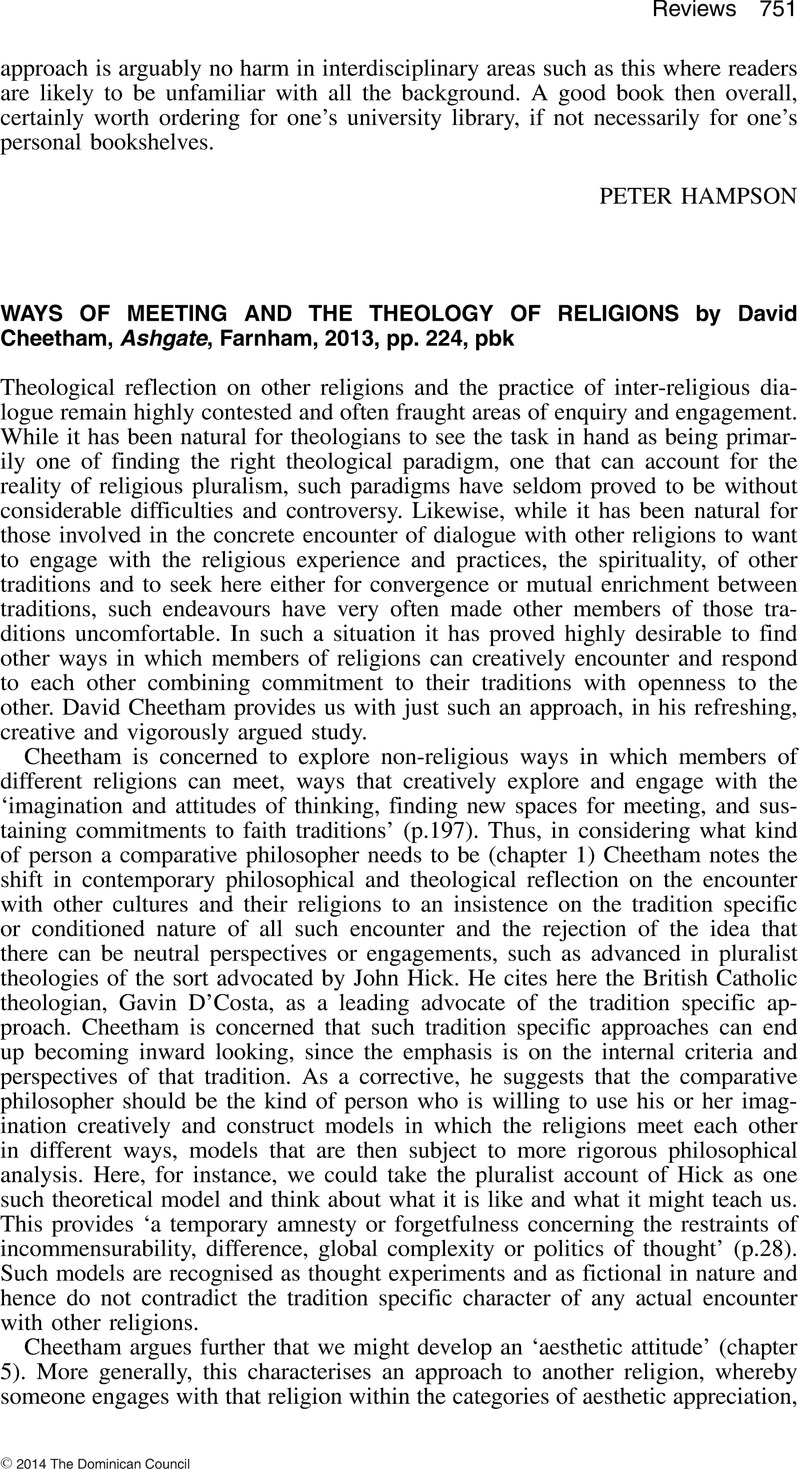No CrossRef data available.
Article contents
Ways of Meeting and the Theology of Religions by David Cheetham, Ashgate, Farnham, 2013, pp. 224, pbk
Review products
Ways of Meeting and the Theology of Religions by David Cheetham, Ashgate, Farnham, 2013, pp. 224, pbk
Published online by Cambridge University Press: 01 January 2024
Abstract
An abstract is not available for this content so a preview has been provided. Please use the Get access link above for information on how to access this content.

- Type
- Reviews
- Information
- Copyright
- Copyright © 2014 The Dominican Council


